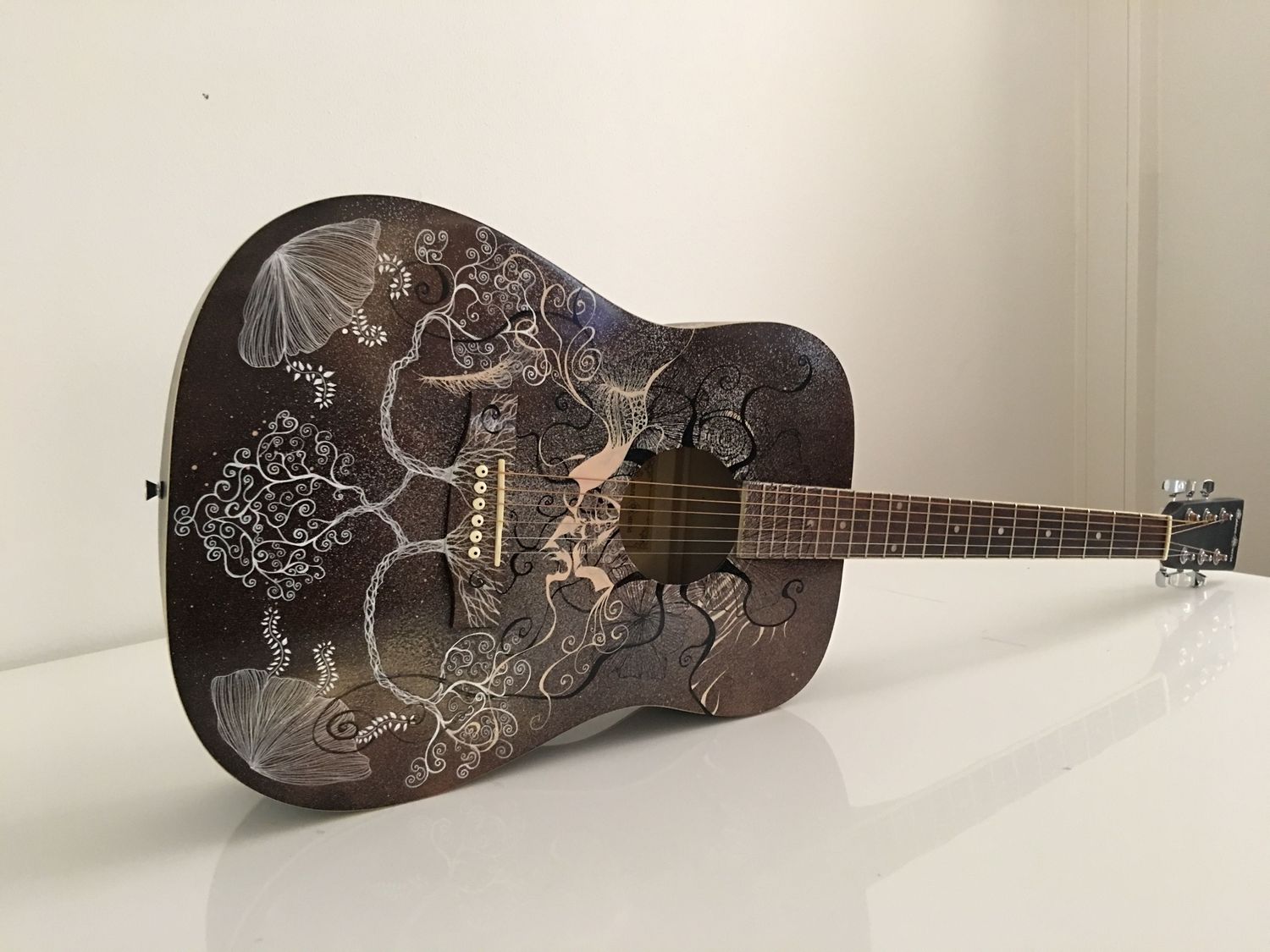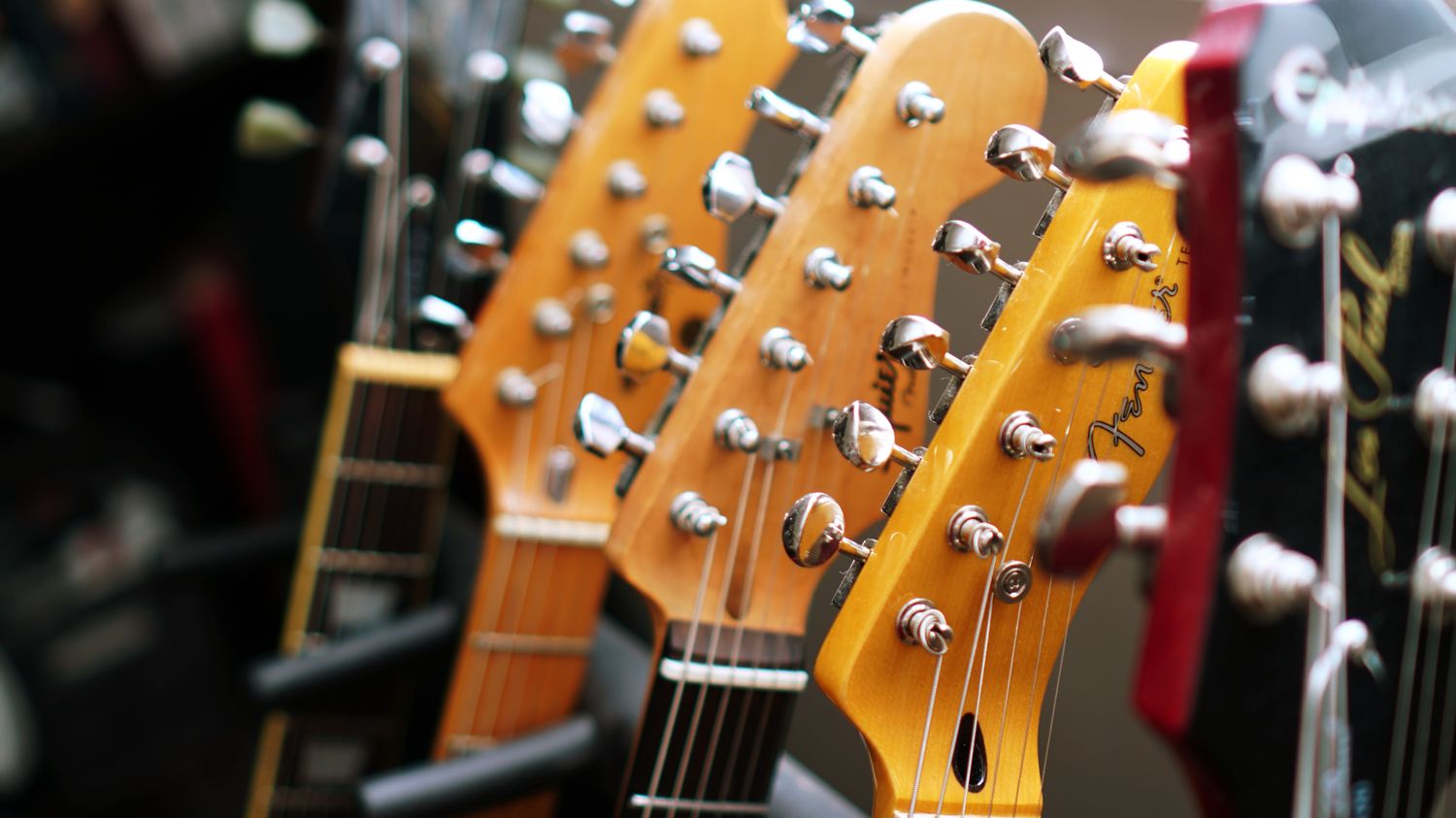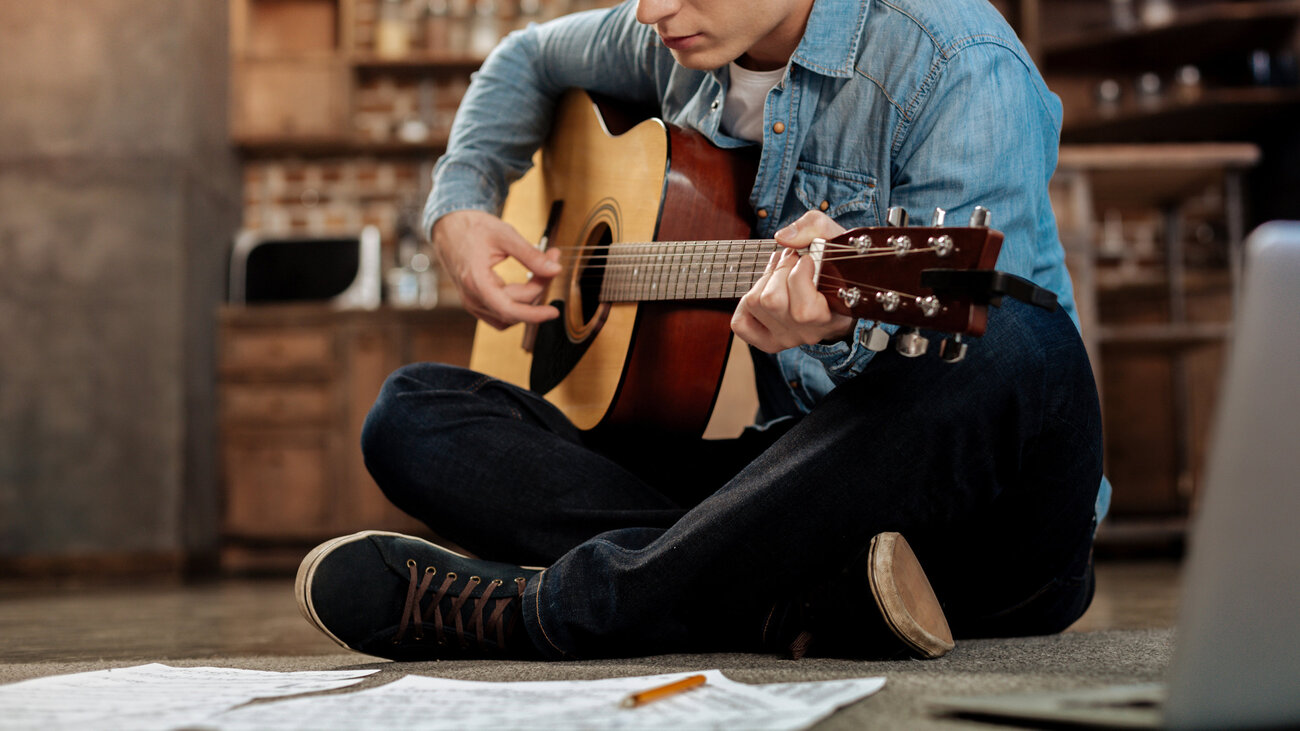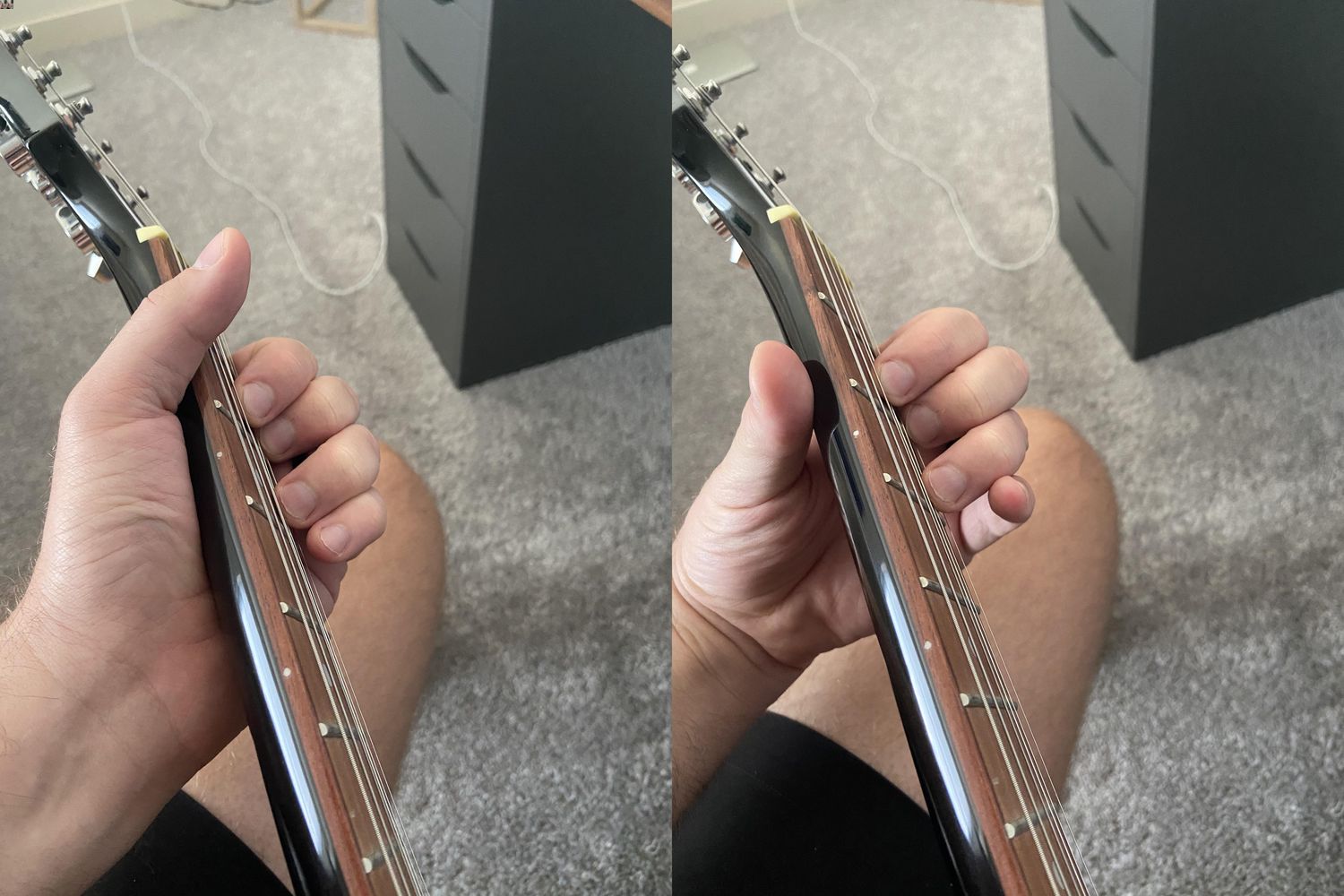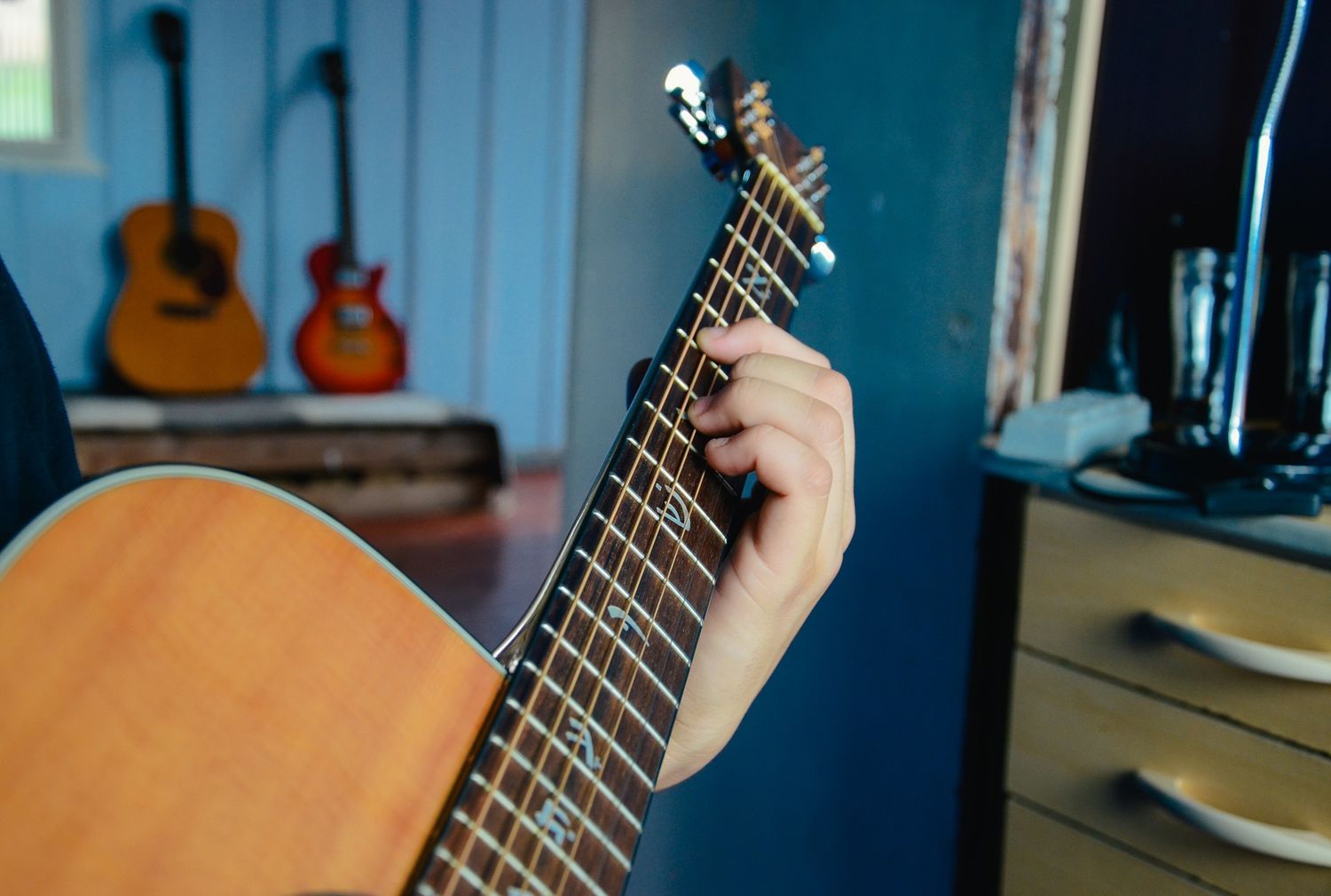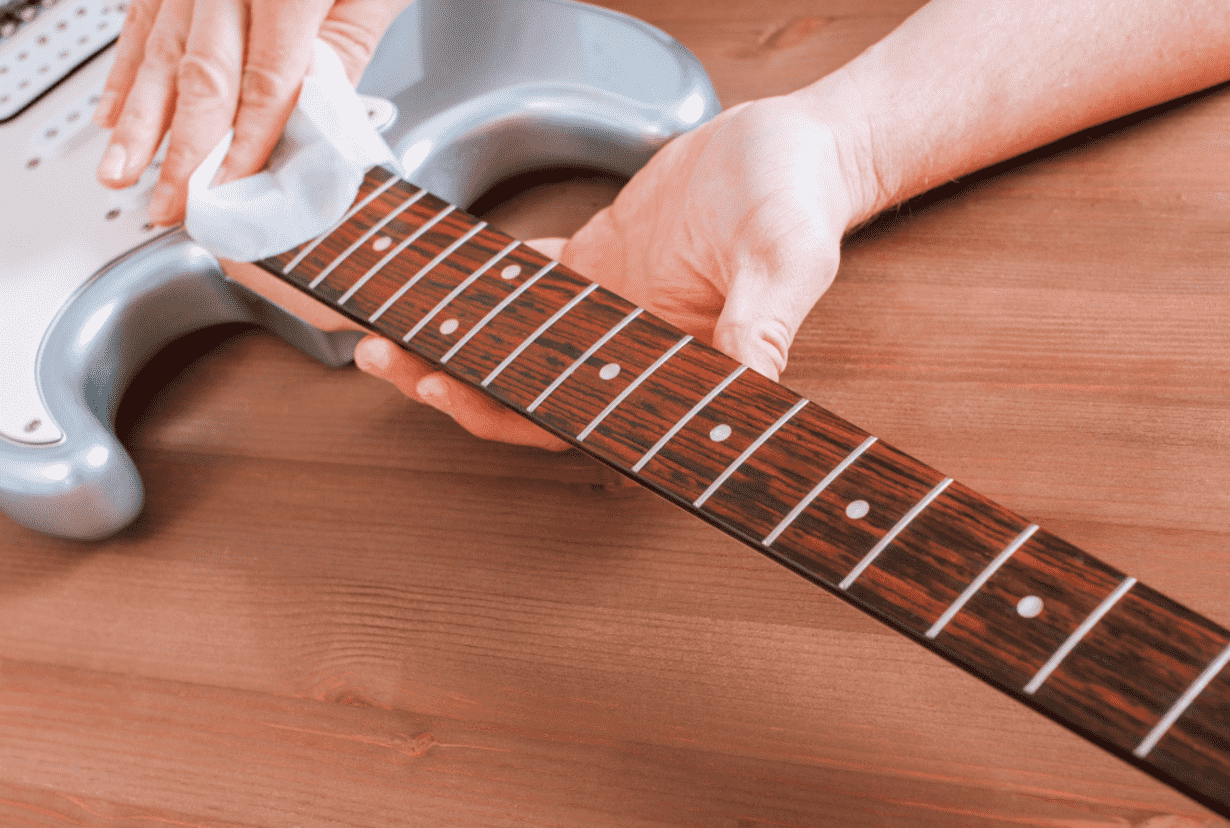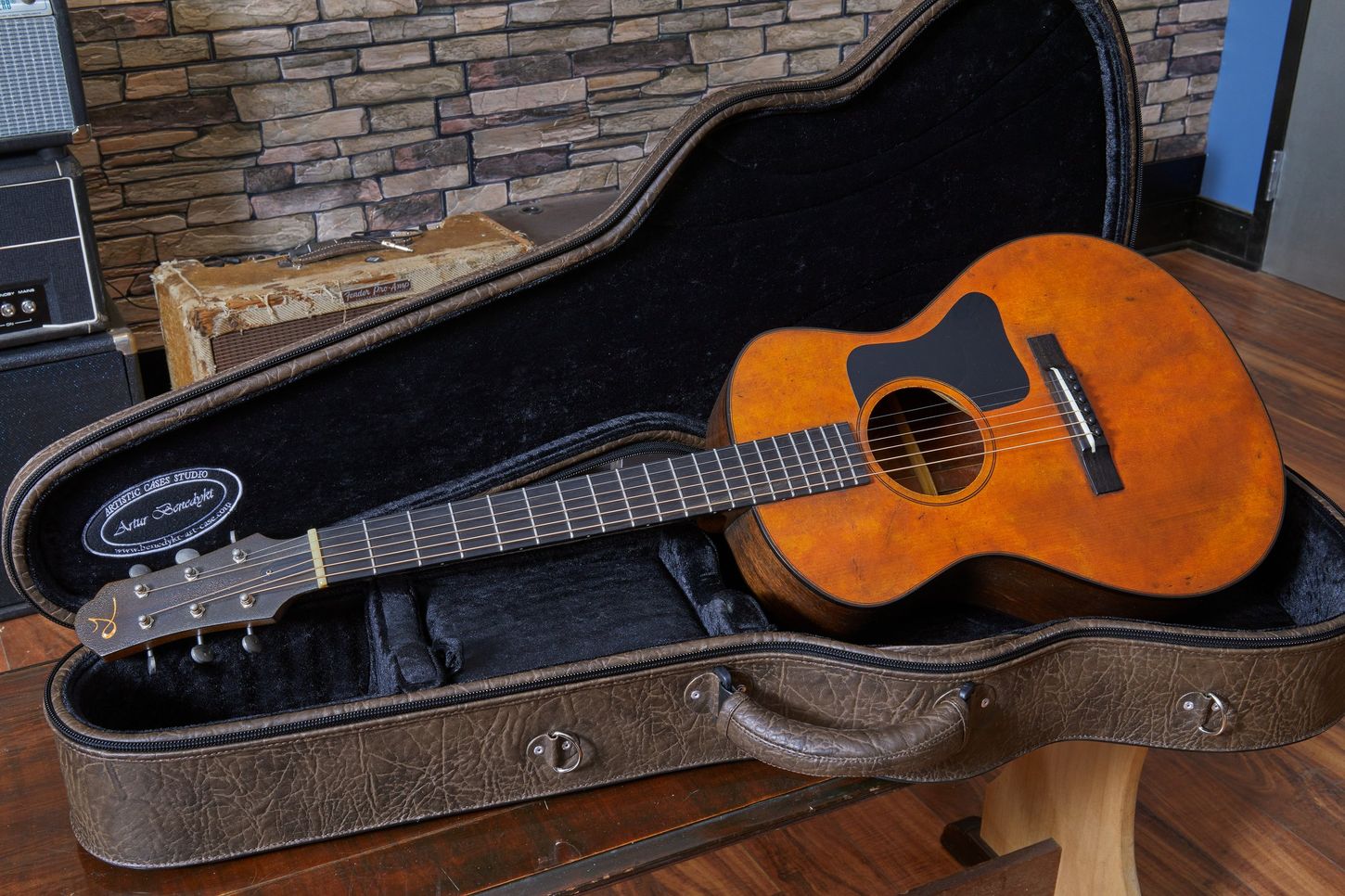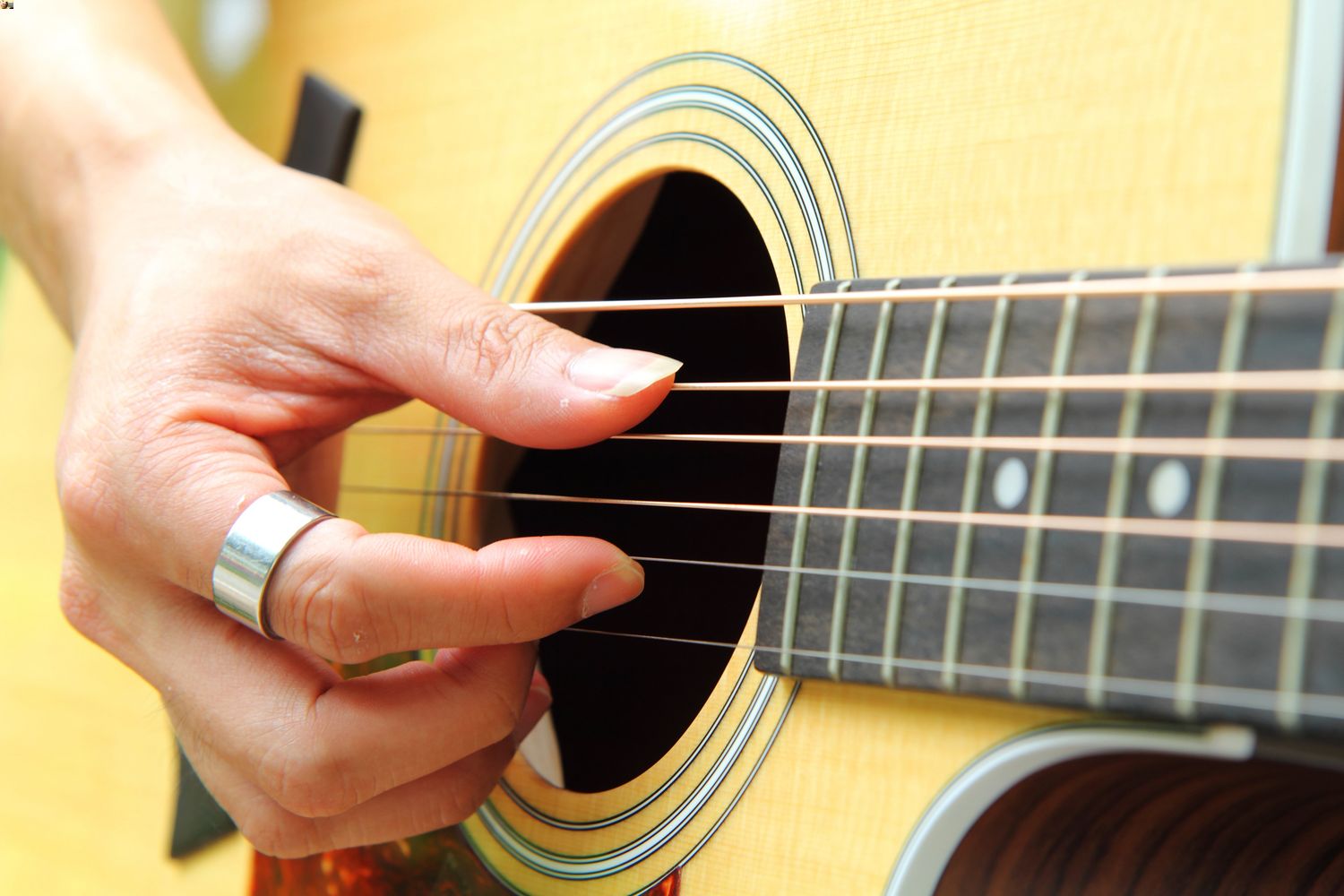Home>Instruments>Guitar>How To Tap On A Guitar


Guitar
How To Tap On A Guitar
Published: February 14, 2024
Learn how to tap on a guitar with our step-by-step guide. Master the technique and add a unique flair to your guitar playing. Discover tips and tricks for tapping on the guitar.
(Many of the links in this article redirect to a specific reviewed product. Your purchase of these products through affiliate links helps to generate commission for AudioLover.com, at no extra cost. Learn more)
Table of Contents
Introduction
Tapping on a guitar is a technique that adds flair and excitement to your playing. It involves using your picking hand to fret notes on the fretboard, creating a unique sound that's distinct from traditional strumming and picking. Tapping has been popularized by legendary guitarists such as Eddie Van Halen, Steve Vai, and Randy Rhoads, and has become a defining element of rock and metal music.
This article will guide you through the art of tapping, from understanding the basics to developing advanced techniques and exercises. Whether you're a beginner eager to add new dimensions to your playing or an experienced guitarist looking to refine your tapping skills, this comprehensive guide is designed to help you unlock the full potential of this captivating technique.
Tapping opens up a world of sonic possibilities, allowing you to produce rapid, cascading notes, intricate melodies, and dazzling solos. It's a versatile tool that can be incorporated into various musical styles, from rock and metal to jazz and fusion. By mastering tapping, you'll expand your repertoire and elevate your performance to new heights.
In the following sections, we'll delve into the fundamental principles of tapping, explore essential techniques, and provide practical exercises to enhance your proficiency. Additionally, we'll offer valuable tips and insights to refine your approach and overcome common challenges. Whether you're drawn to the exhilarating sounds of tapping or seeking to broaden your musical horizons, this guide will equip you with the knowledge and skills to embark on an enriching tapping journey. So, grab your guitar, and let's dive into the captivating world of tapping!
Understanding the Basics of Tapping
Tapping, also known as two-hand tapping or touch technique, involves using the fingers of your picking hand to fret notes on the fretboard, producing rapid and distinctively articulated sounds. To begin understanding tapping, it’s essential to grasp the foundational elements that underpin this technique.
1. Finger Positioning: When tapping, your picking hand assumes a pivotal role. Typically, the index, middle, or ring finger is used to fret notes on the fretboard, while the thumb anchors the neck of the guitar. The fingers should be poised directly above the frets to facilitate clean and precise articulation.
2. Coordination with Fretting Hand: Tapping necessitates coordination between your picking hand and fretting hand. While your picking hand taps the notes, your fretting hand may be employed to sustain or alter the sound by fretting other notes or manipulating the strings. This synchronization is integral to executing seamless and expressive tapping passages.
3. Application of Hammer-Ons and Pull-Offs: Tapping often involves the use of hammer-ons and pull-offs to generate fluid and rapid note sequences. A hammer-on is executed by tapping a fret to produce a note without plucking the string, while a pull-off entails removing a finger from a fret to sound a lower note. These techniques are fundamental to crafting dynamic and intricate tapping phrases.
4. Utilization of Open Strings: Incorporating open strings into tapping sequences can yield a broader sonic palette and facilitate seamless transitions between notes. By strategically integrating open strings, you can infuse your tapping passages with resonance and depth, enriching the overall tonal texture.
Understanding these fundamental aspects of tapping sets the stage for honing your skills and exploring more advanced techniques. As you familiarize yourself with these basics, you’ll be better equipped to embark on the journey of mastering the art of tapping, unlocking its expressive potential and enriching your musical repertoire.
Developing Tapping Techniques
Mastering tapping techniques entails a combination of dexterity, precision, and creative exploration. As you delve deeper into this expressive method, consider the following strategies to refine and expand your tapping repertoire.
1. Finger Independence and Strength: Cultivating finger independence and strength is crucial for executing intricate tapping sequences with fluidity and control. Engage in exercises that target each tapping finger individually, gradually increasing speed and accuracy to enhance your finger dexterity.
2. Dynamics and Articulation: Tapping isn’t solely about speed; it’s equally important to focus on dynamics and articulation. Experiment with varying degrees of finger pressure and explore different tapping angles to imbue your notes with nuanced dynamics, from delicate whispers to emphatic accents.
3. Incorporating Tapping into Chord Progressions: Elevate your playing by integrating tapping into chord progressions. Experiment with tapping arpeggios and embellishments within chord structures, adding a captivating dimension to your rhythm playing and expanding your creative possibilities.
4. Hybrid Picking and Tapping Combinations: Embrace the synergy of hybrid picking and tapping to diversify your sound. By seamlessly blending conventional picking techniques with tapping, you can craft complex and melodically rich phrases that transcend traditional boundaries.
5. Exploring Extended Fretboard Techniques: Venture beyond the confines of the lower frets and explore tapping across the entire fretboard. Embrace wide interval stretches, multi-octave tapping, and unconventional fretting patterns to unlock a vast array of melodic and harmonic possibilities.
By diligently honing these techniques and embracing creative experimentation, you’ll cultivate a versatile and expressive tapping style that reflects your musical identity. Embrace the journey of continual growth and discovery, allowing your tapping prowess to flourish and resonate with captivating musicality.
Tapping Exercises
Embarking on a regimen of purposeful tapping exercises is instrumental in fortifying your technique, fostering finger agility, and expanding your musical fluency. These exercises are designed to progressively challenge and elevate your tapping proficiency, paving the way for greater expressive freedom and creative exploration.
1. Basic Tapping Patterns: Commence with fundamental tapping patterns, such as ascending and descending single-note sequences across different strings. Focus on maintaining even and consistent articulation while gradually increasing the tempo to fortify your tapping foundation.
2. Chromatic Tapping Drills: Engage in chromatic tapping drills that traverse the fretboard, promoting finger independence and bolstering your command over note transitions. Emphasize precision and clarity as you navigate through chromatic sequences, gradually expanding the scope of your fret-hand reach.
3. Arpeggio Tapping Etudes: Delve into arpeggio tapping etudes to cultivate melodic fluency and harmonic acumen. Explore various arpeggio shapes and inversions, integrating tapping to embellish and animate these chordal structures, fostering a seamless fusion of technique and musicality.
4. String-Skipping Tapping Challenges: Confront the intricacies of string-skipping tapping challenges, which demand adept string navigation and spatial awareness. By surmounting these hurdles, you’ll enhance your fret-hand agility and expand your capacity for crafting dynamic and non-linear phrases.
5. Rhythmic Tapping Routines: Immerse yourself in rhythmic tapping routines that encompass diverse time signatures and rhythmic subdivisions. Cultivate a keen sense of rhythmic precision and explore syncopated patterns to infuse your tapping with rhythmic vitality and expressive depth.
Consistent and focused engagement with these tapping exercises will yield tangible improvements in your technical prowess and musical fluency. Approach each exercise with patience and perseverance, embracing the incremental growth that accompanies dedicated practice. As you internalize these exercises, you’ll fortify the foundation of your tapping proficiency and unlock a realm of creative possibilities within your playing.
Tips for Improving Your Tapping Skills
Refining your tapping skills is a dynamic and rewarding journey that demands focused effort and strategic refinement. Here are invaluable tips to enhance your tapping proficiency and elevate your playing to new heights:
1. Cultivate Relaxed Precision: Strive for a balance between precision and relaxation when executing tapping passages. Tension can impede fluidity and control, so maintain a relaxed yet precise approach to optimize your tapping performance.
2. Embrace Metronomic Discipline: Develop metronomic discipline by practicing tapping exercises with a metronome. Gradually increase the tempo as you attain proficiency, ensuring that your tapping remains synchronized and rhythmically precise.
3. Focus on Tonal Clarity: Pay meticulous attention to tonal clarity and note articulation. Each tapped note should resonate with clarity and sustain, irrespective of the tempo or complexity of the passage. Refine your technique to achieve consistent and crystalline tonal expression.
4. Explore Diverse Tapping Finger Combinations: Experiment with different finger combinations for tapping, including single-finger taps, two-finger taps, and three-finger taps. Embrace the versatility of various finger combinations to expand your sonic palette and foster adaptability in your tapping approach.
5. Integrate Tapping with Other Techniques: Seamlessly integrate tapping with other guitar techniques, such as bending, sliding, and vibrato, to imbue your playing with multifaceted expressiveness. Embrace the symbiotic relationship between tapping and conventional techniques to enrich your musical vocabulary.
6. Ear Training and Musical Context: Cultivate a discerning ear by transcribing and analyzing tapping passages in diverse musical contexts. Develop an understanding of how tapping is employed in different genres and styles, and leverage this insight to infuse your playing with stylistic authenticity and creative versatility.
By incorporating these tips into your practice regimen and performance approach, you’ll embark on a trajectory of continuous growth and refinement. Embrace the nuances of tapping, celebrate its expressive potential, and allow your evolving skills to resonate with captivating musicality and boundless creativity.
Conclusion
Congratulations on embarking on the enriching journey of mastering the art of tapping on the guitar. Throughout this comprehensive guide, we’ve delved into the fundamental principles, advanced techniques, purposeful exercises, and invaluable tips that collectively form the bedrock of tapping proficiency. As you continue to hone your skills and explore the myriad possibilities of tapping, remember that patience, perseverance, and creative curiosity are your steadfast allies on this musical odyssey.
Tapping transcends mere technical prowess; it embodies a fusion of artistry and innovation, inviting you to sculpt vibrant sonic tapestries and unleash boundless creativity. Whether you’re drawn to the electrifying sounds of rock and metal or seek to infuse tapping into diverse musical genres, your journey as a tapping guitarist is a testament to your evolving musical identity and expressive depth.
As you navigate the intricacies of tapping, embrace the joy of discovery and the thrill of pushing the boundaries of your musical expression. Each practice session, each melodic exploration, and each performance opportunity is an invitation to infuse your playing with authenticity, emotion, and unbridled imagination.
Remember, the essence of tapping lies not only in the notes you produce but in the stories you convey and the emotions you evoke through your playing. Let your tapping resonate with the echoes of your musical narrative, weaving a captivating tapestry that reflects your unique voice and artistic vision.
May your tapping endeavors be infused with unwavering passion, relentless dedication, and the sheer joy of musical discovery. Embrace the exhilarating complexities and the soul-stirring simplicity of tapping, for within its rhythmic cadence and melodic fervor, you’ll find an endless wellspring of inspiration and artistic fulfillment.
So, pick up your guitar, immerse yourself in the enchanting world of tapping, and let your fingers dance across the fretboard, painting vibrant melodies and igniting the soul-stirring magic of music.

